The CDT Gear Guide: Class of 2018 Survey
In the second installment of our look at the Continental Divide Trail Thru-hiker Survey, we are taking a deep dive into the gear hikers on the Continental Divide Trail used this year. This includes not only what CDT gear was the most common, but what CDT gear performed best over the course of the trail (and what CDT hikers would do differently were they to do it all again).
I’ve organized this post in a way that I hope will give a comprehensive picture of what gear CDT thru-hikers are using. This post covers the MOST COMMON GEAR (backpacks, shelters, sleeping bags, sleeping pads, water treatment, stoves, bear canisters, trekking poles, shoes), the BASE WEIGHTS of different categories of hikers and how they stack up to one another, the FAVORITE GEAR (same as “most common”), how much was SPENT ON GEAR, and finally, a bit of gear ADVICE.
Despite my best efforts, I am sure that some of you will come up with data or comparisons you would like to see that I have overlooked. My hope is to make this a useful resource for CDT hikers, so if there’s anything that you think is missing, please leave a comment or email me. Please note, I made an honest effort to collect and as much data as I could, but this does not mean there’s anything scientific about the results. Not everyone who hiked the CDT this year filled out this survey, so this isn’t necessarily representative of the reality on the trail. I did my best to make sure this accurately reflects the data collected from this year’s Continental Divide Trail class and to remove any obviously bad data.
That being said, I hope you enjoy the CDT Gear Guide brought to you by the CDT Class of 2018.
NOTE: A list of the different hiker categories and how they are identified can be found at the end of this post.
JUMP TO A SECTION
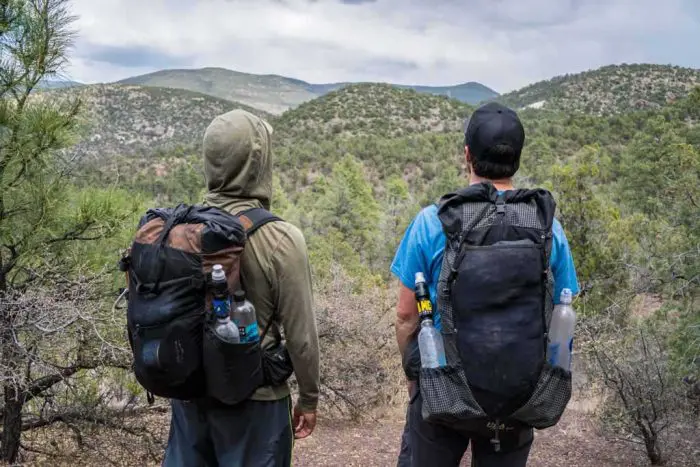
NOTES ON THE DATA
- This year we had 103 completed surveys – up over 20% from last year.
- The responses to some questions have been sorted and colored in hopes of more usefully and accurately presenting the data (e.g. northbound vs. southbound).
- Not all CDT hikers document the stats of their thru-hike so the data is not guaranteed accurate (this is not science we’re dealing with).
- For simplicity, I refer to the survey respondents collectively as this year’s “class“. Remember this is only a fraction of this year’s CDT hikers and it is not necessarily representative of the entire CDT Class of 2018.
- If you find some small and meaningless discrepancy in the data, get over it. BUT – if you find large or obvious errors, please let me know.
- I will be releasing more detailed survey posts focused on CDT Resupply, CDT Demographics, and CDT Advice in the coming weeks. If you would like to be notified of new surveys, click here.
Labels differentiating hiker segments:
- THRU: Thru-hikers (all)
- FINISH: Thru-hikers (all) who completed the entire CDT
- NOFINISH: Thru-hikers (all) who did NOT complete the CDT
If NO LABEL has been appended to a data point, then I used all data collected (this includes section hiker data).
THE FAVORITE CDT GEAR
We’ve covered the most common gear from the Continental Divide Trail this year, but that doesn’t necessarily tell us what gear worked best (or didn’t work at all). That’s why I also ask hikers whether they are happy with their gears’ performance. No point in doing what everyone else is doing if they’re all doing it wrong, right?
NOTES ON THE DATA:
- All the weight (and for backpakcs, capacity) for all the products below are for the product in a size medium (backpacks) or regular (sleeping bags and pads) unless otherwise noted.
- I only included items here that were used by AT LEAST ten hikers. Why ten? Because that’s the number I arbitrarily decided on – I already told you, this isn’t scientific.
FAVORITE CDT BACKPACK:
The ULA Catalyst was favorite pack among CDT thru-hikers this year. It is a 48 oz / 1.361 kg pack capable of carrying up to 75 L and 40 lbs / 18 kg.





*I group the Hyperlite Mountain Gear Southwest and Windrider together because they are the same pack but one has Dyneema exterior pockets and the other has mesh exterior pockets.
FAVORITE CDT SHELTER:
The Tarptent Notch was the favorite shelter of Continental Divide Trail thru-hikers this year. It’s a one-person, two-pole shelter weighing in at just 28 oz / 794 g (not including pole). There’s also a version that’s 8 oz / 227 g lighter for $225 more.
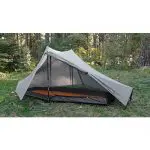



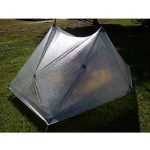
FAVORITE CDT SLEEPING BAG:
The Western Mountaineering Versalite was the most popular sleeping bag for Continental Divide Trail thru-hikers last year. I can persoanally attest to the awesomeness of this sleeping bag as I used it on the Continental Divide Trail and never once had a cold night. For more information, check out me detailed review.





Since sleeping bags often come in many options (length/width/fill-power), I used “Regular” lengths and widths for the above table (and assumed a bag that would fit someone who was 5’10” / 178 cm).
FAVORITE CDT SLEEPING PAD:
The Sea to Summit UltraLight Insulated sleeping pad was this year’s favorite among CDT hikers with everyone who used it giving it a perfect 5/5 rating. This pad has a two-way valve that makes inflating and deflating it very quick and easy.





FAVORITE CDT STOVE:
The MSR PocketRocket 2 was the favorite stove for CDT hikers this year. It’s an ultralight canister stove weighing just 2.6 oz / 73 g and capable of boiling one liter of water in just 3.5 minutes.




FAVORITE CDT WATER TREATMENT:
Aquamira was favorite water treatment system for CDT thru-hikers this year. It’s not great for filtering debris from your water, but it will kill the stuff that makes you sick.




FAVORITE CDT SHOES:
The Salomon XA Pro 3D were the favorite among CDT hikers this year. Thru-hikers who finished used an average of 4.2 pairs of these shoes on their hikes for a total cost of $607.





*The Altra Lone Peak 3.0 and 3.5 have been discontinued and have been replaced by the Altra Lone Peak 4.0.
**The Brooks Cascadia 12 have been discontinued and replaced with the Brooks Cascadia 13.
A WORD ABOUT SHOES
Even if you knew for certain that each pair of your shoes would last you 700 mi / 1,125 km, buying yourself four pair of shoes at the start of the hike would be a risky decision – what if the shoes aren’t as comfortable as you thought? What if your feet swell? What if you die?
Remember, you can buy shoes using this thing called the internet and have them mailed ahead on the trail (to a post office, hotel, local outfitter, trail angel, etc.) once you know that you’re going to need a new pair. And if you encounter an emergency situation, you can always buy locally or simply wait around for your shoes to show up in the mail.
THE FAVORITE GEAR LIST
Now, let’s put together a gear list that CDT thru-hikers would (supposedly) be happy to carry. Here’s what we’ve got:







The cumulative retail purchase price of this gear list? $1,339 (excluding shoes and, obviously, everything else not listed here). Yes, being a homeless mountain person is a lot more expensive than most people imagine. Now, let’s look at something that nobody but hikers, and more specifically thru-hikers, really cares about: how much all this stuff weighs.
- BIG THREE (PACK+SHELTER+SLEEPING BAG): 6 lbs 12 oz / 3.062 kg
- BIG FOUR (BIG 3+SLEEPING PAD): 7 lbs 12.9 oz / 3.541 kg
- EVERYTHING: 8 lbs 2.5 oz / 3.7 kg
Obviously, this is still missing a lot of gear (rain gear, warm jacket, headlamp, extra clothing, and whatever else people throw in their packs). However, it doesn’t get us anywhere close to the AVERAGE STARTING BASE WEIGHT (that is, pack’s weight not including consumables such as food, water, and your poop paper) of this year’s thru-hikers: 15 lbs 4.8 oz / 6.94 kg. Note that the stove included in this list, the MSR PocketRocket 2, does not inckude the weight of a pot.
Now, before we get to the most COMMON GEAR, let’s take a closer look at hiker base weight now, shall we?
In every category we can see a drop in base weight (despite this being very small and probably statistically insignificant). What does it mean?! I’m betting that it’s just a result of people being pressured by all of the ultralight fanatics to cut all of the straps and tags off of their gear. Either that, or people are bringing too much to begin with, I guess.
So what can we see between those hikers who completed the trail and those who failed the trail? Well, hikers who completed the trail began with a base weight that was, on average, 1.44 oz / 41 g lighter than hikers who did not finish the trail. WHAT DOES IT MEAN!? Well, it definitely means that you should pay that extra $300 for that piece of ultralight gear that’s going to save you 1 oz / 28 g. It’s very clearly going to make the difference between you finishing and not finishing. We just scienced it, bro. Better just ditch all your old, shitty gear and buy all brand new ultralight stuff. You know, just to be safe.
Great! Now, we’re going to look at how the pre and post-hike base weights compare between people who were thru-hiking their first long-distance trail and those who had already done a long-distance thru-hike.
Well would you take a look at that! The more experienced hikers INCREASED their base weights? What madness is this? Well, it could, of course, be a function of this survey (again) not being very scientific in nature, or, more interestingly, it could be due to the hubris of the former thru-hiker (more on this in the Thru-hiker Superiority Complex). Could it be that the more experienced hikers brought less than what they needed in the interest of being part of the super cool and super-duper special group of ultralight douchebags? Possibly.
As was the case with last year, those hikers on their first hike ended up lightening up their packs, but not by much. Just to remind everyone, you absolutely do NOT need to have a crazy sub-five-pound (2.3 kg) base weight to finish your thru-hike. No, you don’t even need to have a sub-ten-pound (4.6 kg) base weight. What you need to do is not bring things you don’t need (the cheapest and most effective way to cut your base weight). Don’t fall into the trap of thinking that the way to get your base weight down is to spend another $250 to cut 5% of your tent’s weight (the only thing that will do is gain you access to an elite club of ultralight baggery); no, the way to cut weight is to not bring that extra pair of “town clothes”.

Plenty of people have happy and successful thru-hikes with all ultralight gear. However, people also have happy and successful thru-hikes with packs much heavier than the arbitrary “average” we’ve arrived at here. Gear selection is personal (like the direction you wipe; don’t let anyone tell you that you’re a savage for wiping back to front – but you most definitely are). Ultimately, if you’re happy to carry something and/or it improves the quality of your hike, then nobody has the right to tell you that you shouldn’t have it (and if they do, tell them that Mac said to get fucked).
That said, if the Continental Divide Trail is going to be your first stab at a long-distance hike and you fall in to the camp of “I have little/no idea what I’m doing/getting myself into”, then there are strategies to mitigate your risk of failing to go the distance. One of the best resources reported by this year’s CDT class was former thru-hikers. Well, this year’s class now falls into the category of “former thru-hikers” and a lot of the gear comments are instructing you, future hiker of the CDT, to think long and hard about what gear you want to bring.
Take some time to think about what you NEED on the trail; not what you want, what you need. Don’t say I didn’t try to warn you when you decide to bring extra weight and then end up sending everything home (because most of you will ignore this advice and bring a bunch of unnecessary gear, and if you don’t then I’ve done my job).
THE MOST COMMON CDT GEAR
So we know what hikers liked, but what about what most people were carrying?
Afterall, hiking the CDT is all about fitting in and being a sheep (a very cool and elite sheep_. So what was the most common CDT gear on the trail this year? Using the data, we’ll construct an “average” Continental Divide Trail hiker’s gear list. Let’s start where we left off in the survey, and review the MOST COMMONLY USED GEAR from this year’s CDT class.
Remember, this is the most commonly used gear – simply because something was common, this does not necessarily translate to it automatically being the “best” (or even good). Remember, further up in this post we looked at hikers’ favorite gear.
NOTE: All the gear in the charts below is listed in order of most common (at the top) to less common (at the bottom).
MOST COMMON BACKPACK:
The Hyperlite Mountain Gear Southwest / Windrider* was the most common pack for CDT thru-hikers this year. It comes in 40, 55, and 72-liter versions, but the 55-liter pack was the most common among CDT hikers. Read my detailed review of it here.





*I grouped the Hyperlite Mountain Gear Southwest and Windrider together because they are the same pack but one has Dyneema exterior pockets and the other has mesh exterior pockets.
MOST COMMON SHELTER:
The Zpacks Hexamid was the most common shelter for Continental Divide Trail thru-hikers this year. It requires one trekking pole (or, sold separately, tent pole) and a minimum of six stakes to set up (not included in the shelter weight listed here).



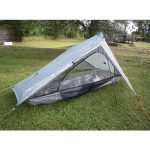

MOST COMMON SLEEPING BAG:
The Enlightened Equipment Revelation 20° was the most common sleeping bag for Continental Divide Trail thru-hikers last year (and it’s a quilt). This quilt is available as an “off the shelf” model, or is customizable (fill power, length, color) if you want to spend a bit more.




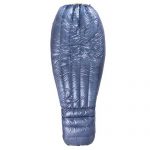
Since sleeping bags often come in many options (length/width/fill-power), I used “Regular” lengths and widths for the above table (and assumed a bag that would fit someone who was 5’10” / 178 cm).
MOST COMMON SLEEPING PAD:
For the third year in a row, the Therm-a-Rest NeoAir XLite was the most common sleeping pad for Continental Divide Trail thru-hikers this year. In fact, the Therm-a-Rest brand pretty much dominated the entirety of the sleeping pads reported.





MOST COMMON STOVE:
The MSR PocketRocket 2 was the most common stove for Continental Divide Trail thru-hikers last year. However, 29.3% of respondents said they went stoveless on the trail (something to keep in mind).





MOST COMMON WATER TREATMENT:
The Sawyer Squeeze was the most common water treatment system for CDT thru-hikers this year (again). Remember, you do not need a treatment for viruses on the CDT (at least that’s the word in the mountains).




MOST COMMON SHOES:
The Altra Lone Peak 3.5 were the most common shoes on the CDT this year. They have a 0 mm heel-to-toe drop, and thru-hikers who finished the CDT used an average of 4.13 pairs of these shoes for a total cost of $496.





*The Altra Lone Peak 3.0 and 3.5 have been discontinued and have been replaced by the Altra Lone Peak 4.0.
**The Brooks Cascadia 12 have been discontinued and replaced with the Brooks Cascadia 13.
THE MOST COMMON GEAR LIST
Knowing what we know now, we can begin to assemble a CDT gear list for this year’s CDT class. Here’s what we’ve got so far:







*I group the Hyperlite Mountain Gear Southwest and Windrider together because they are the same pack but one has Dyneema exterior pockets and the other has mesh exterior pockets.
**The Altra Lone Peak 3.5 have been discontinued and have been replaced by the Altra Lone Peak 4.0.
The cumulative retail purchase price of this gear list? $1,395 – nearly the same as the favorite gear list we arrived at above ($56 more). Now for the weight (honestly, if this is your first thru-hike that you’re planning for, don’t fall into the trap of caring about a couple of ounces/grams).
- BIG THREE (PACK+SHELTER+SLEEPING BAG): 4 lbs 1.19 oz / 1.848 kg
- BIG FOUR (BIG 3+SLEEPING PAD): 4 lbs 13.19 oz / 2.188 kg
- EVERYTHING: 5 lbs 3.5 oz / 2.367 kg
WHERE TO INVEST
So now that we know what was the most favorite and what was the most common, let’s look at where this year’s class spent their AVERAGE OF $1,015 (σ = $873) on gear before beginning their thru-hikes. Here, we’ll also look at the average temperature rating of hiker sleeping bags, how big everyone’s packs were, and who had a freestanding shelter.
As a bonus, I’ve included a look at how these numbers differ between hikers who finished and those who did not finish.
- THRU – AVERAGE AMOUNT SPENT ON GEAR | $1,015 (σ = $873)
- THRU (ON FIRST THRU-HIKE) – AVERAGE AMOUNT SPENT ON GEAR | $1,241 (σ = $772)
- THRU (NOT ON FIRST THRU-HIKE) – AVERAGE AMOUNT SPENT ON GEAR | $890 (σ = $836)
- FINISH – AVERAGE AMOUNT SPENT ON GEAR | $944 (σ = $751)
- NOFINISH – AVERAGE AMOUNT SPENT ON GEAR | $1,408 (σ = $1,342)
- THRU – AVERAGE SLEEPING BAG TEMPERATURE RATING | 16.4°F / -8.67°C
- FINISH – AVERAGE SLEEPING BAG TEMPERATURE RATING | 16.4°F / -8.67°C
- NOFINISH – AVERAGE SLEEPING BAG TEMPERATURE RATING | 16.8°F / -8.44°C
- THRU – AVERAGE BACKPACK SIZE | 54.2 L (σ = 10.5)
- FINISH – AVERAGE BACKPACK SIZE | 53.5 L (σ = 10.2)
- NOFINISH – AVERAGE BACKPACK SIZE | 58 L (σ = 11.5)
- THRU – FREESTANDING SHELTER?
- 23.5% – Freestanding
- 7.5% – Semi-freestanding
- 60% – Not freestanding
- FINISH – FREESTANDING SHELTER?
- 34.6% – Freestanding
- 7.7% – Semi-freestanding
- 57.7% – Not freestanding
- NOFINISH – FREESTANDING SHELTER?
- 14.3% – Freestanding
- 7.1% – Semi-freestanding
- 78.6% – Not freestanding

What’s interesting about this? Nothing. All of this information is useless and you’re just reading this to make yourself feel better about the hike you’ve had or are going to have.
Or maybe I’m wrong and somewhere hidden in here the key to a successful thru-hike (have a very slightly warmer sleeping bag and a smaller pack?).
THE TECHNOLOGY
This year I’ve also asked hikers about the devices and apps they’re using on the trail (because how are you supposed to survive in nature without your phone aka camera aka compass aka audio-listening device aka note-taking device aka television aka pooping entertainment?).
First, a look at the split between Android and iOS devices.
- WHICH KIND OF PHONE DID YOU USE?
- 45.5% – iOS
- 53.5% – Android
- 1% – I don’t have a phone
And now for the Continental Divide Trail apps (unless you’re a member of the 4.6% of hikers still living in the past). Here are the most popular CDT apps among hikers this year:

Atlas Guides (also known as Guthook) was the most popular app used by Continental Divide Trail hikers this year with a reported 91.2% of hikers using the app. This is a full-featured app developed specifically for the CDT. It includes offline maps, waypoints, photos, elevation profiles, and user comments.

Gaia is a powerful backcountry navigation tool that was used by 17% of hikers. It’s not specifically designed for the CDT, but it allows the use of multiple offline map sources as well as the import and recording of GPS tracks.

Avenza Maps is mostly used by hikers to download and display the CDT maps created by Jonathan Ley and commonly referred to as the “Ley Maps”. Avenza Maps allows you to store maps offline and then track your location, plot locations and photos, and measure distance/area.

HIKERBOT
Hikerbot is a newer app on the CDT scene and was used this year by a reported 10% of hikers. It includes trail data sourced from hikers, offline maps, elevation profiles, location sharing, and a powerful search function. It’s currently only available on Android phones.

PeakFinder AR was not an app I asked CDT hikers about this year, but it’s one that I am recommending you take a look at. It won’t help you with navigation, but it will help you identify every peak you pass (thus freeing you from conversations/arguments beginning, “I think that’s…”). It works offline and is awesome, just pay the $5 and download it.
ADVICE FROM CDT THRU-HIKERS
And finally, a few more concise tips from the CDT Class of 2018 to take into account before your final gear selection:
- Bad weather gear is way more important than on the AT or PCT. If its raining its almost always miserably cold and shitty.
- Don’t make yourself miserable being ultralight. Ultralight is supposed to make the hike nicer not extremely uncomfortable.
- It gets cold on the CDT at night. If you want to sleep well, be prepared.
- Carried a 16 oz / 454 g event parka whole way. Well worth the weight for t-storms and hail. Very exposed trail at high elevation…lighter isn’t always better.
- AT&T was pretty worthless. Verizon had much better coverage everywhere.
- Down pants are the shit.
- Don’t go “stupid light”. Bring pants, long sleeves, and a headnet for the Wind River Range (Wyoming).
- The CDT is cold. Pack warmer clothes. I think gloves are a must for this trail.
THE CHANGES FROM LAST YEAR
- ADDED QUESTION: Did you use a freestanding tent?
- ADDED QUESTION: Which model of shoe did you use?
- ADDED QUESTION: What kind of phone did you use on the trail?
- ADDED QUESTION: What app(s) did you use on trail?
THE CHANGES FOR NEXT YEAR
Here are the changes that I’ve decided on for next year’s survey. If you have any suggestions, I would love to hear them – leave a comment below to let me know.
- CLARIFY: Ask about people sharing tents and/or sleeping gear to get more accurate results and tease out what gear might be best suited for couples.
CDT Survey Collection
Affiliate Disclosure: This page may contain affiliate links, which means I may receive small commissions for purchases made via these links at no additional cost to you. This helps pay the bills and keep the site up and running. Thank you for your support!


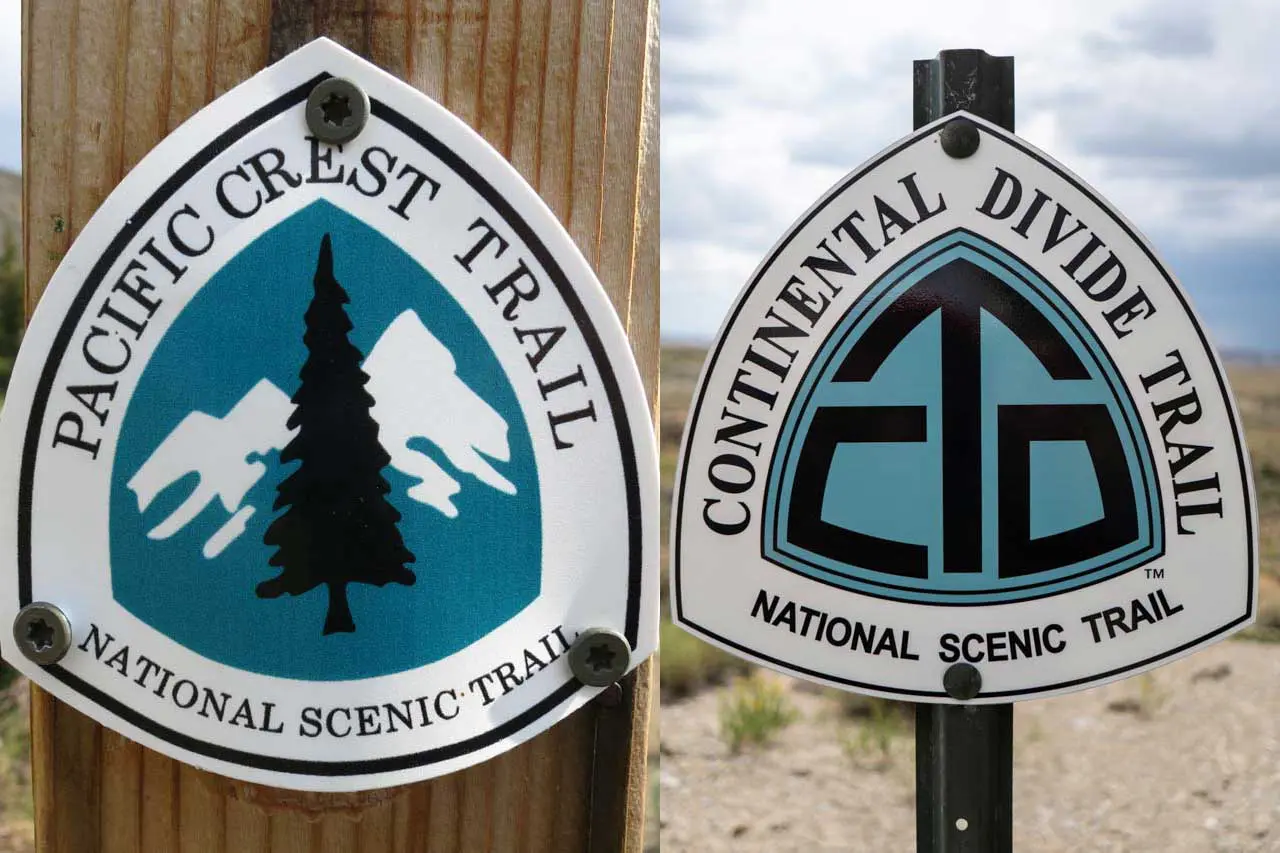
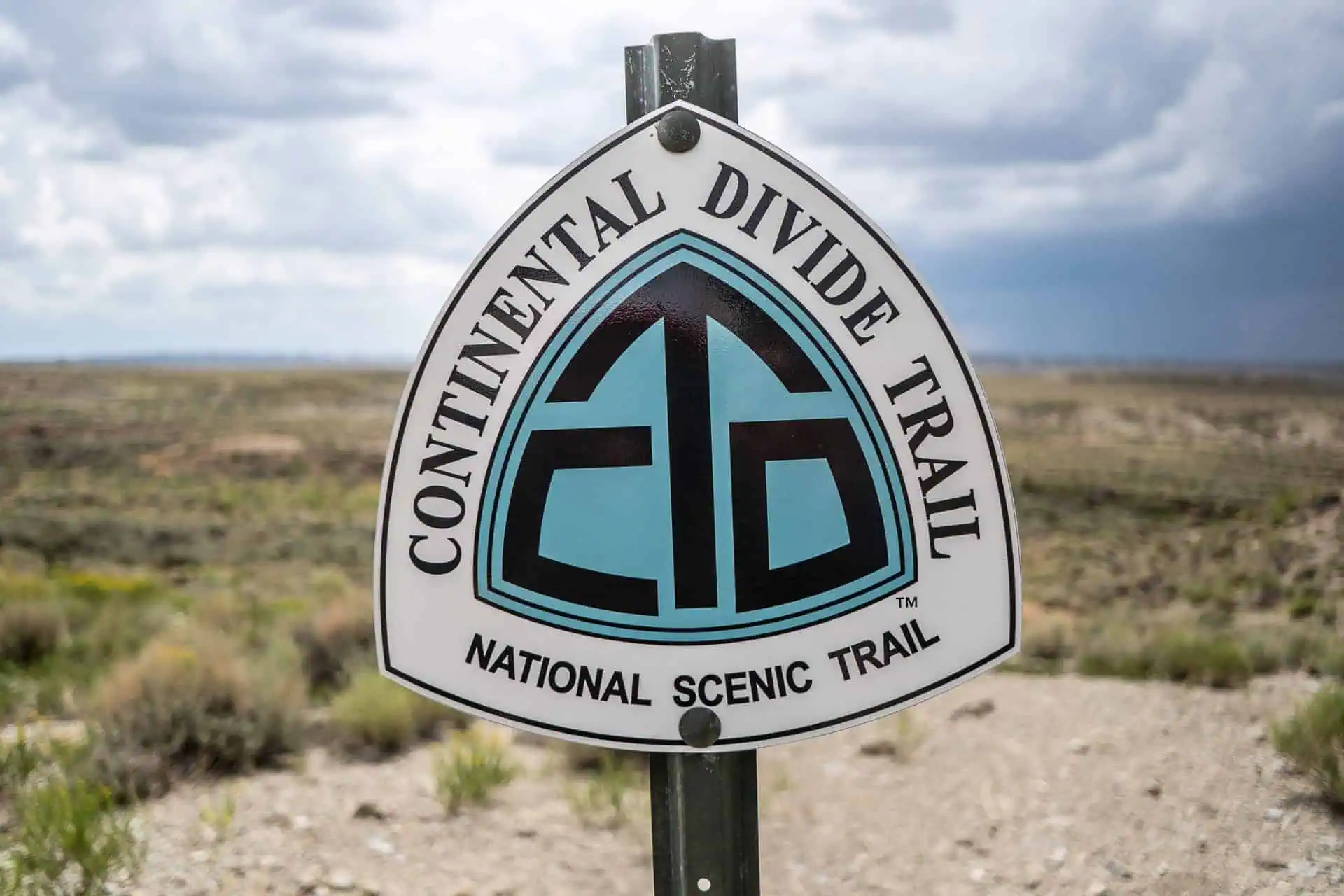
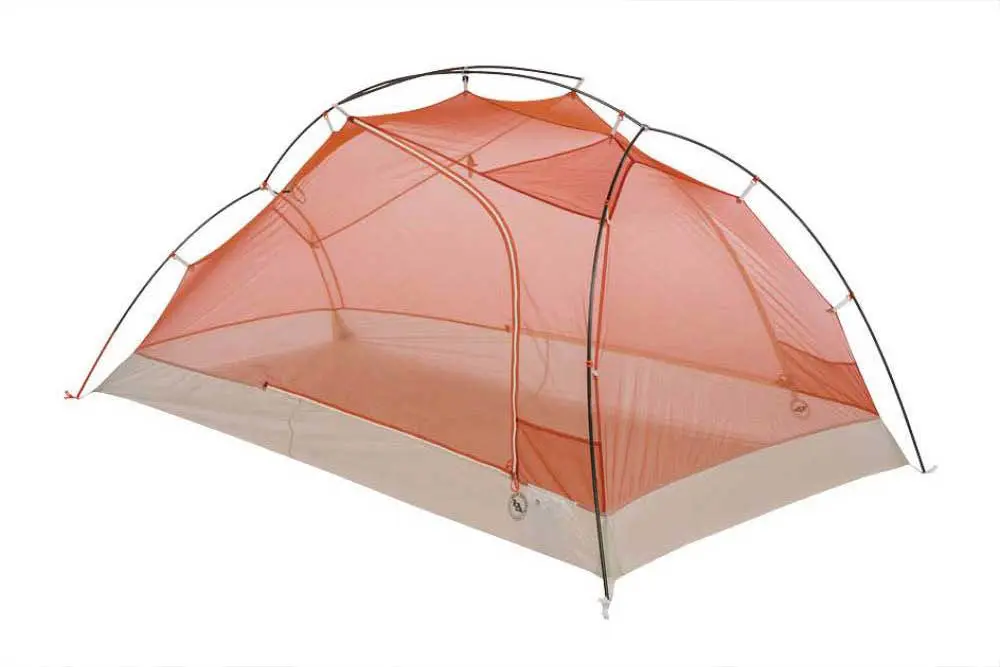
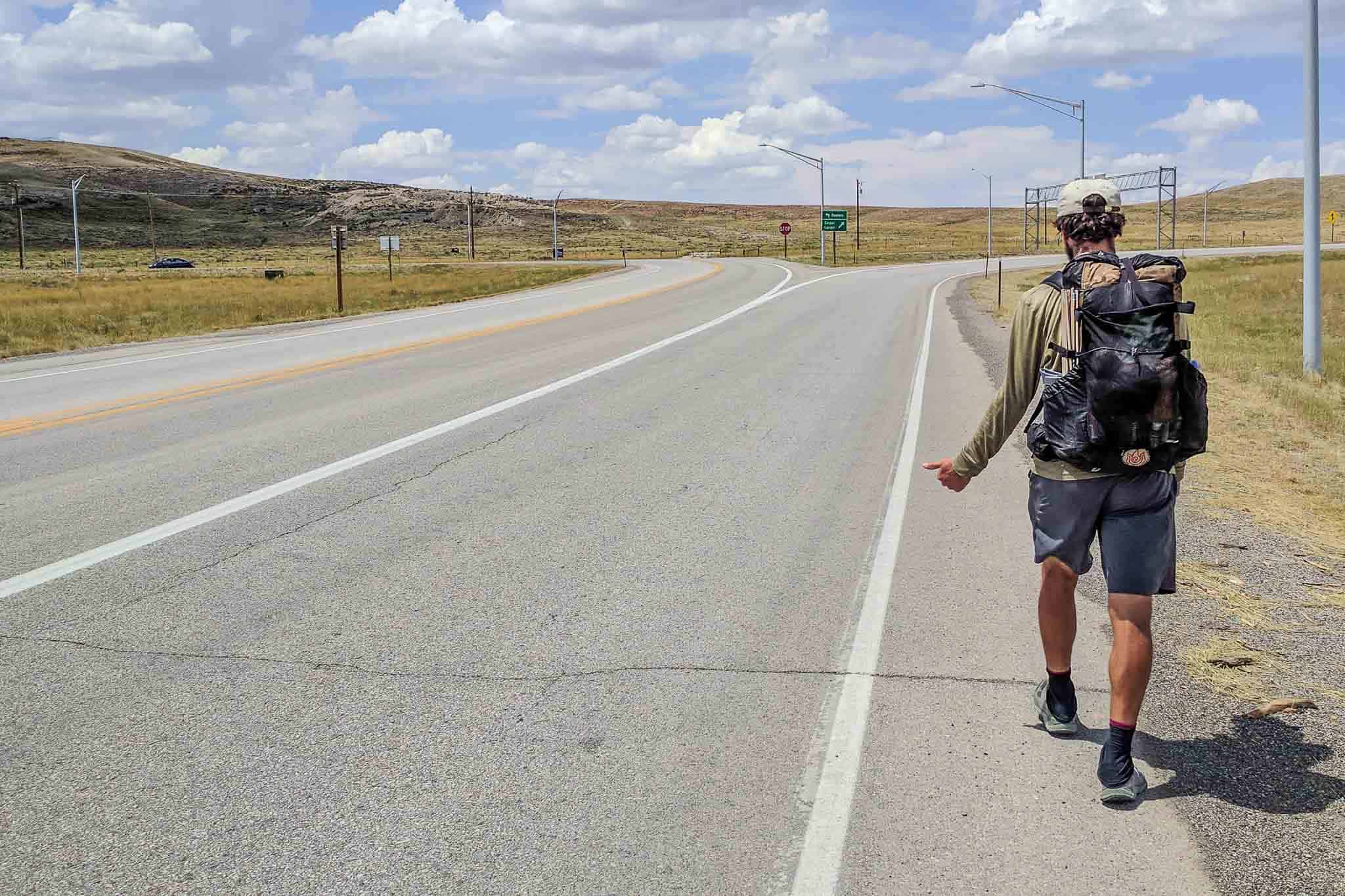
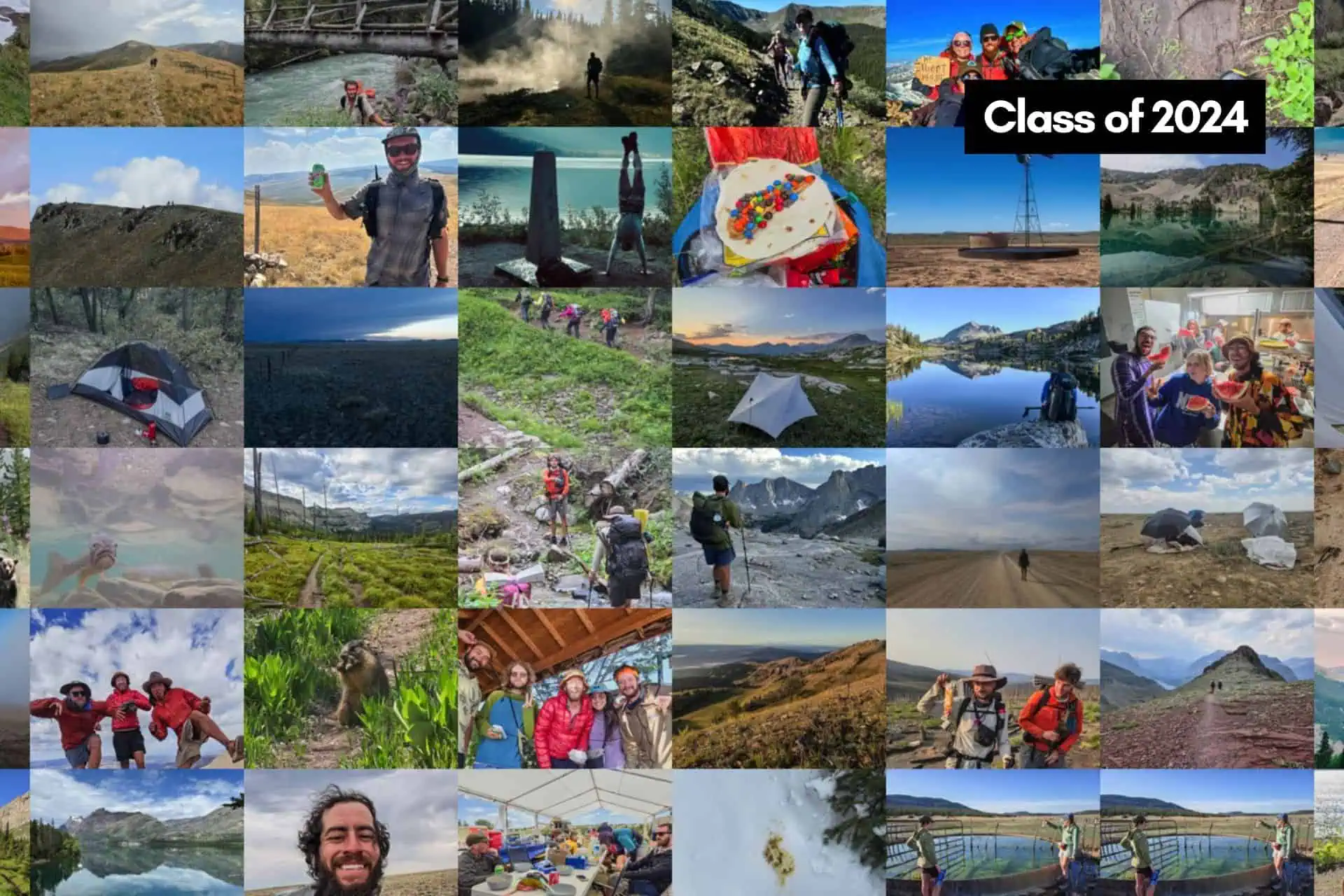
in the general survey please include question relating to town stops, hero or stay, there are some obvious contenders, but might be useful for the following years planning
I’m assuming you meant “zero” and not “hero” here. Good idea – I will consider this for future surveys.
“Hero” walking in to town…….
resupply, charging while eating, maybe wash maybe not,
and hiking out, no night stop….. a Hero, or maybe its me that got the term wrong
But Zero or Hero or stay actually works for a survey
LOL, I haven’t heard “hero” but I like it!
Maybe asking hikers the number of bears, moose and deer/large animals they saw?
I’ve had this question in the past and it’s been unsuccessful – but I might add a grizzly/black bear question back this year. Thanks for the input!
Any chance someone could tell me the name of the backpack on the left in the top picture with the two guys. I know the pack on the left is a ULA but curious about the pack on the left.
The backpack on the left is the ULA CDT
Please include the number of responders in the most common and favorites lists. Currently we can’t tell if the ‘5/5’ represents one person’s response or 50 in favorites, or the separation in number of users is between common items.
As noted above, items were not included unless they were used by at least ten hikers (aka at least ~10% of survey respondents). As noted in the “Most Common Stoves” section, items did not receive a rating if they were used by fewer than ten hikers.
It might be worth asking a future question of ‘What gear did you see another hiker have that you wished for?’ or along those lines. I know that the more questions you ask, the more likelihood some will not complete the survey, but you could also ask what did in terms of cooking eg how often, stoveless. Alternatively a single thought from them about food they could pass on to other hikers. Finally, a single thought about any other gear item except those the big 4 that they would want to pass on to others eg FAK, toileting, clothing etc
Thanks for the input, Chris. I will try to incorporate something like this into next year’s surveys.
Thanks for another great post!
I just have a few comments/questions/suggestions :)
– I don’t know why, but I didn’t receive an email for both this and the previous blog post..
– Suggestion 1: I think it would be very interesting for both the PCT and the CDT surveys to add a comparison from previous years to see how the results are changing over time and see new trends, etc. it could be for demographics, gear, base weights, days hiking, and so many other interesting things :)
– Suggestion 2: For most liked and disliked items, to add an optional explanation to why it was their favorite or least favorite
– Suggestion 3: For the question about Previous hikes, it could be interesting to see what Other hikes people have done, other than the listed ones. Maybe add an optional field where people can specify which other hikes they have also done that are not on the list.
– Question: I see this symbol (σ) used in this and the PCT survey, what does it stand for? :)
Cheers!
Thanks for another great post!
I just have a few comments/questions/suggestions :)
– I don’t know why, but I didn’t receive an email for both this and the previous blog post..
– Suggestion 1: I think it would be very interesting for both the PCT and the CDT surveys to add a comparison from previous years to see how the results are changing over time and see new trends, etc. it could be for demographics, gear, base weights, days hiking, and so many other interesting things :)
– Suggestion 2: For most liked and disliked items, to add an optional explanation to why it was their favorite or least favorite
– Suggestion 3: For the question about Previous hikes, it could be interesting to see what Other hikes people have done, other than the listed ones. Maybe add an optional field where people can specify which other hikes they have also done that are not on the list.
– Question: I see this symbol (σ) used in this and the PCT survey, what does it stand for? :)
Cheers!
Thanks, Bubs! I am planning on doing a couple of comparison posts, but you’re right that it would be nice to put the previous year’s data alongside the current year’s. I will do this next time.
I have an area for hikers to explain why they didn’t like items, but unless everyone gave the same reason for not liking something I leave it out (because otherwise it’s just one person saying something about a piece of gear).
I also have an optional field for the Previous Hikes where people can write hikes in, but I only end up including a write-in option if there’s a significant number of people who write the same thing (usually it’s just a spread of one-offs.
The σ symbol stands for standard deviation (if you don’t know what that is, a quick search should clear it right up).
And I don’t know why you didn’t get an email, send me an email and I’ll get it sorted out.
Thanks for the reply and clarification :)
I actually did end up getting one email about the two new posts, after I had posted the comment. I just had thought before that the emails would be sent automatically right-away when a new blog post is added, and I didn’t know that the creator actually has to additionally write an email and send it to the people on the list.
Keep up the good work, and happy hiking in 2019!